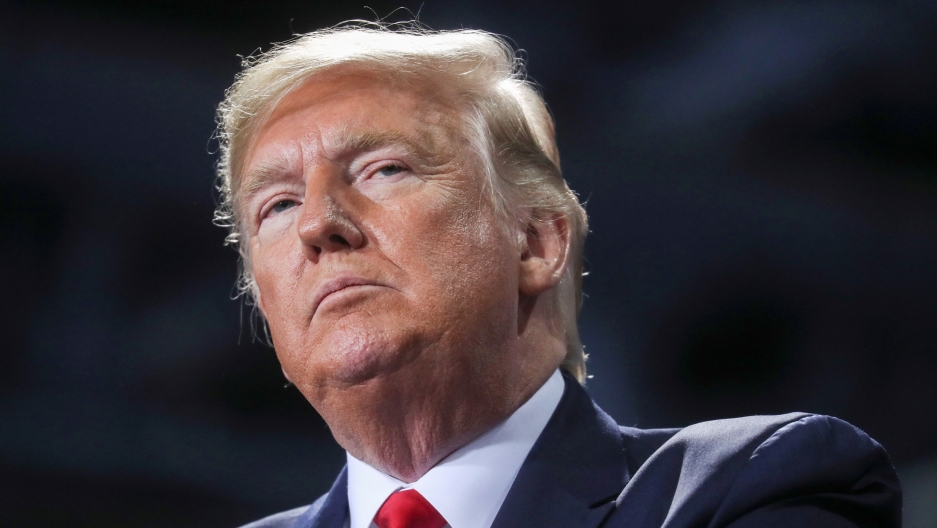'I don't think about it now,' says Trump on phase-2 trade talks with Beijing
The expectations for a promised phase-two trade pact with China were further dampened when President Donald Trump alleged that the 'relationship with China has been severely damaged', accusing Beijing over the handling of the novel coronavirus, which continues to spread rapidly in the United States.

Washington DC: The expectations for a promised phase-two trade pact with China were further dampened when President Donald Trump alleged that the 'relationship with China has been severely damaged', accusing Beijing over the handling of the novel coronavirus, which continues to spread rapidly in the United States, The WallStreet Journal reported.
"I don't think about it now," Trump told reporters aboard Air Force One, where he criticized China's response to the new coronavirus.
"They could have stopped the plague, they could have stopped it, they didn't stop it," he added.
When the US and China inked their trade deal in January, the two sides described the pact as a first-phase agreement, to be followed by new negotiations toward a more expansive deal in a second and possibly third phase.
The world's two largest economies never set a timeline for the second phase, however, and trade negotiations were quickly overshadowed as countries around the world grappled with the pandemic. The economic fallout from the pandemic also made it increasingly unlikely that China would meet its targets for expanded purchases of US goods under the phase-one deal, fueling further doubts about prospects for new talks, the Journal stated further.
Also Read | Trump says he is 'starting to feel good' and vows 'to be back' soon
"It's not feasible to expect phase two to start until phase one is implemented and the overall environment of the US-China relationship improves," Myron Brilliant, executive vice president and head of international affairs at the US Chamber of Commerce, was quoted as saying.
In Beijing, officials were always cool to the idea of a phase-two deal--believing they had little to gain from US demands that China cut government subsidies to domestic companies, downsize state-owned firms and ease the government's grip on the economy.
The US had a USD308 billion trade deficit in goods and services with China in 2019, due to the US importing far more goods than it exports. That deficit is little changed since 2016, when Trump took office but is down from a peak imbalance of nearly USD380 billion that was reached in 2018.
The president's announcement that phase-two talks are on the back burner also means that US tariffs on imports from China are unlikely to be removed soon. The US has imposed tariffs on about USD360 billion a year worth of goods from China. As part of the deal struck in January, the administration cut the rate from 15 per cent to 7.5 per cent on about USD110 billion worth of goods, while leaving tariffs on the rest at 25 per cent.
Trump made ending the trade imbalance a centerpiece of his 2016 presidential campaign and began imposing a series of tariffs on Chinese goods starting in 2018 to pressure Beijing for concessions.
Also Read |
US Presidential Elections: What future beholds for US citizens
Talks initially focused on a comprehensive deal, but fell apart in May 2019, resulting in an escalation of tariffs. The US accused the Chinese negotiators of backtracking in the talks. When negotiators revived talks in the fall, they focused on a narrower set of issues.
A centerpiece of the phase-one deal was a Chinese commitment to boost its purchasing of U.S. exports. But as coronavirus lockdowns shuttered first the Chinese economy, then the U.S. economy, trade between the countries--and trade globally--fell sharply.
The agreement called on China to hit specific dollar targets for agricultural goods, energy products, manufactured goods and services in 2020, and an even higher target in 2021.
In April and May, China began to step up its purchases of US exports, but with six months of the year completed, it is nowhere near the pace necessary to hit the goals by year's end. China is especially far away from meeting the goal for energy purchases, owing in part to a plunge in energy priceat has lowered the dollar total of any Chiness the purchases.
Meanwhile, the trade in services between the US and China, which includes tourism and higher education, also remains severely hampered by travel restrictions. (ANI)
 Dynamite News
Dynamite News 